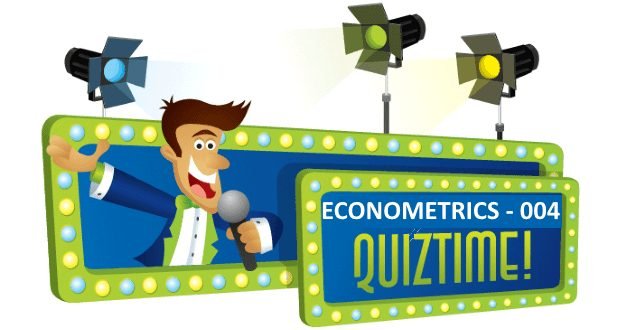500 câu trắc nghiệm Kinh tế lượng – 3A

Tổng hợp 500 câu trắc nghiệm + tự luận Kinh tế lượng (Elementary Statistics). Tất cả các câu hỏi trắc nghiệm + tự luận đều có đáp án. Nội dung được khái quát trong 13 phần, mỗi phần gồm 3 bài kiểm tra (A, B, C). Các câu hỏi trắc nghiệm + tự luận bám rất sát chương trình kinh tế lượng, đặc biệt là phần thống kê, rất phù hợp cho các bạn củng cố và mở rộng các kiến thức về Kinh tế lượng.
Các câu hỏi trắc nghiệm + tự luận của phần 3A bao gồm:
SHORT ANSWER. Write the word or phrase that best completes each statement or answers the question. Provide an appropriate response.
1) On an exam on probability concepts, Sue had an answer of 13/8 for one problem. Explain how she knew that this result was incorrect.
Probabilities cannot exceed 1.
2)Cause of Death
| Cancer Heart Disease Other Total | ||||
| Smoker | 135 | 310 | 205 | 650 |
| Nonsmoker | 55 | 155 | 140 | 350 |
| Total | 190 | 465 | 345 | 1,000 |
Discuss the methods for finding the following two probabilities and explain the important differences in the computations.
1) If one person is randomly selected, find the probability that he or she died of heart disease.
2) If one person is randomly selected, find the probability that he or she died of heart disease given that he or she was a nonsmoker.
Probability 1 is 465/1000, using the total of 1,000 deaths, whereas probability 2 is 155/350, using only 350 nonsmokers in the survey. The second probability is a conditional probability, referring only to the nonsmokers in the survey.
3) Suppose that a class of 30 students is assigned to write an essay.
1) Suppose 4 essays are randomly chosen to appear on the class bulletin board. How many different groups of 4 are possible?
2) Suppose 4 essays are randomly chosen for awards of $10, $7, $5, and $3. How many different groups of 4 are possible?
Explain the significant differences between problems 1 and 2.
Problem 1 is a combination, not dependent on order, while problem 2 is a permutation and is dependent on order. 27,405 different groups of 4 are possible for problem 1; 657,720 different groups of 4 are possible for problem 2.
MULTIPLE CHOICE. Choose the one alternative that best completes the statement or answers the question.
Express the indicated degree of likelihood as a probability value.
4) “There is a 40% chance of rain tomorrow.”
○ 40
○ 0.60
● 0.40
○ 4
Find the indicated probability.
5) A bag contains 6 red marbles, 3 blue marbles, and 7 green marbles. If a marble is randomly
○ 1/3
○ 1/7
● 3/16
○ 1/13
Answer the question, considering an event to be “unusual” if its probability is less than or equal to 0.05.
6) Assume that one student in your class of 27 students is randomly selected to win a prize. Would it be “unusual” for you to win?
● Yes
○ No
From the information provided, create the sample space of possible outcomes.
7) Flip a coin twice.
● HH HT TH TT
○ HH TT HT HT
○ HT TH
○ HH HT TT
Answer the question.
8) Find the odds against correctly guessing the answer to a multiple choice question with 4 possible answers.
● 3 : 1
○ 3 : 4
○ 4 : 1
○ 4 : 3
Find the indicated probability.
9) The manager of a bank recorded the amount of time each customer spent waiting in line during
peak business hours one Monday. The frequency table below summarizes the results.
| Waiting Time (minutes) | Number of Customers |
| 0-3 | 14 |
| 4-7 | 9 |
| 8-11 | 11 |
| 12-15 | 6 |
| 16-19 | 7 |
| 20-23 | 3 |
| 24-27 | 2 |
If we randomly select one of the customers represented in the table, what is the probability that the waiting time is at least 12 minutes or between 8 and 15 minutes?
○ 0.519
○ 0.63
● 0.558
○ 0.2
10) 100 employees of a company are asked how they get to work and whether they work full time or part time. The figure below shows the results. If one of the 100 employees is randomly selected, find the probability that the person drives alone or cycles to work.

1. Public transportation: 10 full time, 7 part time
2. Bicycle: 5 full time, 4 part time
3. Drive alone: 29 full time, 27 part time
4. Carpool: 9 full time, 9 part time
○ 0.37
○ 0.56
○ 0.34
● 0.65